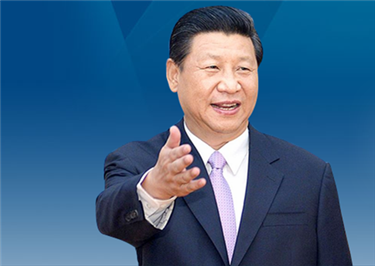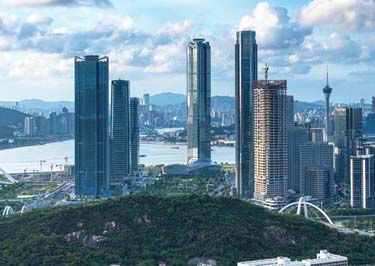Yang Pao-an (Yang Pao'an)
Early CPC theorist and revolutionist
1
The May 4th Movement enlightened Chinese people so that they would embrace Marxism.
Li Ta-chao (Li Dazhao) of North China in Beijing and Yang Pao-an of South China in Canton (Guangzhou) brought Marxism to the fore by publishing its theories in the press, becoming the earliest Marxism theorists and disseminators in China.
Yang's theoretical introduction set the stage for development of the New Culture Movement of the mid 1910s and 1920s in South China, founding of the CPC in Guangdong, and the 1st Cooperation between the Kuomintang and Chinese Communist Party.
2
Yang Pao-an was born in Beishan Village, Nanping, in 1896. Living within a short walk of Macao, Yang was exposed to western culture at an early age.
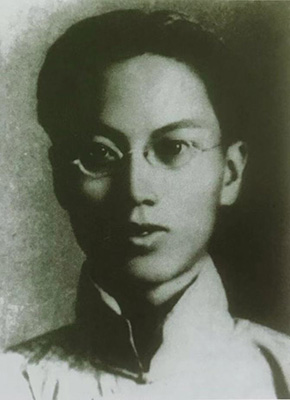
Yang Pao-an (Yang Pao'an) in his youth (1896-1931)
He went to study in Japan when he was 18 and, due to much diligence, was able to translate Japanese works in a very short time.
Yokohama's libraries and bookstores were his haunts. He read politics, economics, philosophy, aesthetics, and all western theoretical genres, but his favorite was the Japanese version of Marxism.
3
Yang returned home in 1916 and taught in the Shimin and Nanwu middle schools in Canton while working as a part-time journalist for the Guangdong Zhonghua Xinbao newspaper.
The New Culture Movement evolved into the May 4th Movement of 1919. Yang published dozens of articles in half a year, advocating the New Culture and Marxism. The most important piece he wrote was "Marxism -- Or Scientific Socialism."
The article was serialized for 19 days in the newspaper, casting light on Marxism's materialism and surplus value doctrines, as well as socialist development rules. It coincided with "My Marxist Perspectives" written by Li Ta-chao, which made quite an impression upon society.
4
The first Communist Group in China was founded by Chen Tu-hsiu (Chen Duxiu) in Shanghai in the summer of 1920, and Li Ta-chao followed suit in Beijing. In response, Yang Pao-an set up a Communist Group in Canton six months later.
The CPC was established during the second year and Yang became one of the earliest Party members in South China.
Hence, his residence in Canton -- Yang's Ancestral Shrine -- was where CPC members used to gather.
5
Upon the 1st Cooperation between the Kuomintang and Chinese Communist Party, T'an P'ing-shan (Tan Pingshan) and Yang Pao-an took posts as secretaries and helped Dr Sun Yat-sen reorganize the KMT.
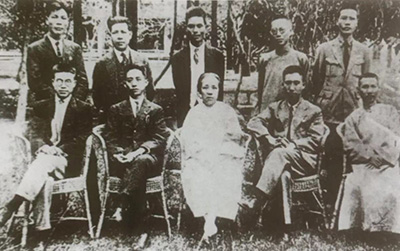
Members on the China Kuomintang Guangdong Executive Committee in 1925, with early-stage CPC leader P'eng P'ai (Peng Pai) sitting second from right and Chinese revolutionary, feminist, politician, painter, and poet Ho Hsiang-ning (He Xiangning) in the center; Yang Pao-an standing second from right
After that, Yang held prominent positions for years in the KMT from secretary to acting organization minister, member of the Standing Committee of the KMT Central Government and Guangdong Provincial Government, and director of the Provincial Organization Department.
Yang was the busiest CPC Party member with the most concurrent KMT leadership posts.
6
Dr Sun Yat-sen was then striving to transform the KMT into a united-front party with workers and peasants as the main body and bourgeoisie and petty bourgeoisie as the alliance.
Following Marxist theories of building a party, Yang assisted Dr Sun in expanding the KMT to 14 provinces in North China with 300,000 KMT members within a short time. The number grew by 13-fold in Guangdong in only one year.
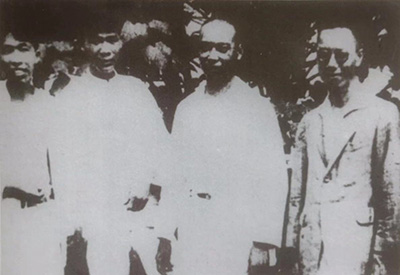
Yang Pao-an, far right, next to Chen Yan-nian, eldest son of Chen Tu-hsiu, during the 1925-26 Canton-Hong Kong Strike
Showing high appreciation for Yang's extraordinary achievements, Dr Sun called him "a real comrade."
7
Cooperation between the KMT and CPC dissolved in 1927 and Yang attended the CPC August 7 Emergency Conference. After the session, Yang Pao-an returned to Canton, helping the CPC organization there to support the Nanchang Uprising troops.
Yang went to Shanghai and engaged in publishing underground CPC newspapers and magazines.
During the period, Yang compiled and published "Essentials of Western History" and translated a Soviet Union scholar's book. He attached Lenin's works to the back of the book for publishing.
In secret, Yang was executed by the Kuomintang at the Longhua Police Command in Shanghai at age 36 in August 1931.
His remains were moved to the Shanghai Longhua Revolutionary Cemetery upon the founding of New China in 1949. A bronze statue of him has been erected at Xianglu Bay off Central Lovers Avenue for his descendants and townsmen to pay respects to.
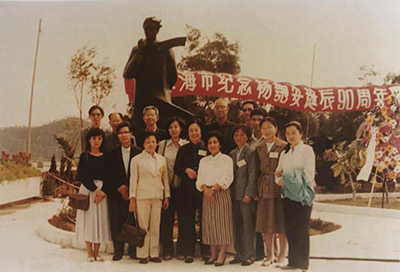
Yang's descendants gather in front of his statue in 1986 [Photos provided by Yang Wenwei]
The 600-sq m Yang Pao'an Exhibition Hall unveiled in Dec 2018 in Beishan Village of Nanping houses a large collection of Yang's life stories and outstanding contributions to promoting Marxism, CPC building and revolutionary processes. It portrays a Zhuhai native with lofty ideals and unwavering determination.
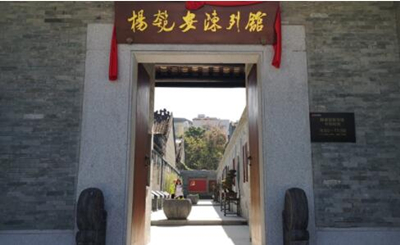
Yang Pao'an Exhibition Hall [Photo courtesy gd-info.gov.cn]
The Yang Pao'an Memorial School was originally built in 1953 in Yang Great Ancestral Hall of Beishan Village, and has been relocated to 79 Yinshiyuan St in the neighborhood.
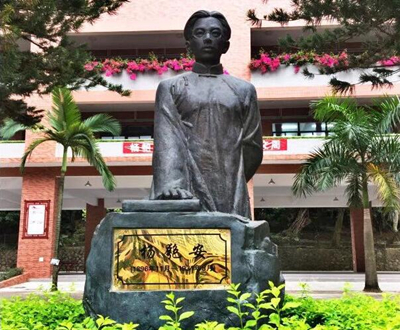
Yang Pao-an statue at the memorial school [Photo courtesy WeChat account: zhxzjyj]

